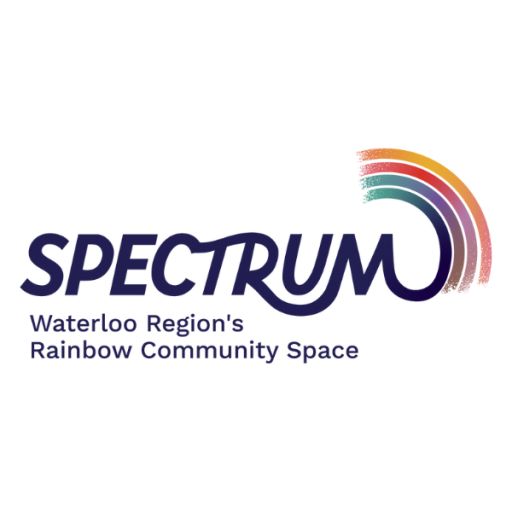What is the difference between Bi and Pan?
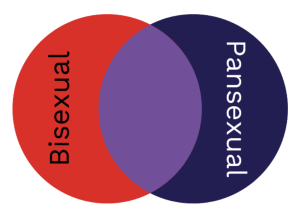
Bi and Pan are a venn diagram with a large area of overlap. People can use these terms to mean different things, but most commonly Bi people would say they experience attraction to multiple genders while Pansexual people would say they experience attraction regardless of gender or despite gender.
History and generational differences
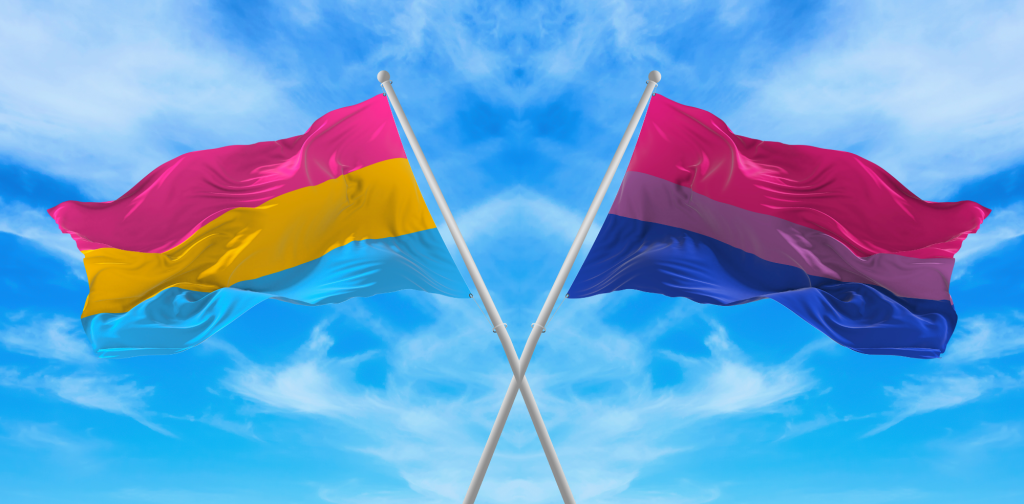
Bisexual: In the 80s and 90s, Bisexual meant someone who was attracted to men and women. However, with growing recognition of non-binary people, the definition has shifted to mean either “attraction to my own gender and another gender” or “attraction to some but definitely not all genders”.
Pansexual: Pansexual originated as a term that wasn’t oriented in binary gender. While it originally meant “attraction to people of all genders”, it is now more commonly used to mean “attraction regardless of gender”.
Because Pansexual is a comparatively newer term, many older Bisexual people (especially Gen X and above) feel equally comfortable with either Bisexual or Pansexual; Pansexual was not a label that was commonly used fifteen or twenty years ago, and older Bisexual people who feel that Pansexual resonates for them often still feel an emotional attachment to Bisexual as a way of describing themselves. As such, it’s not uncommon for older Bisexual people to describe themselves as Bi / Pan. For younger people, it is more common to view the two labels as separate and distinct.
Inter-group conflict
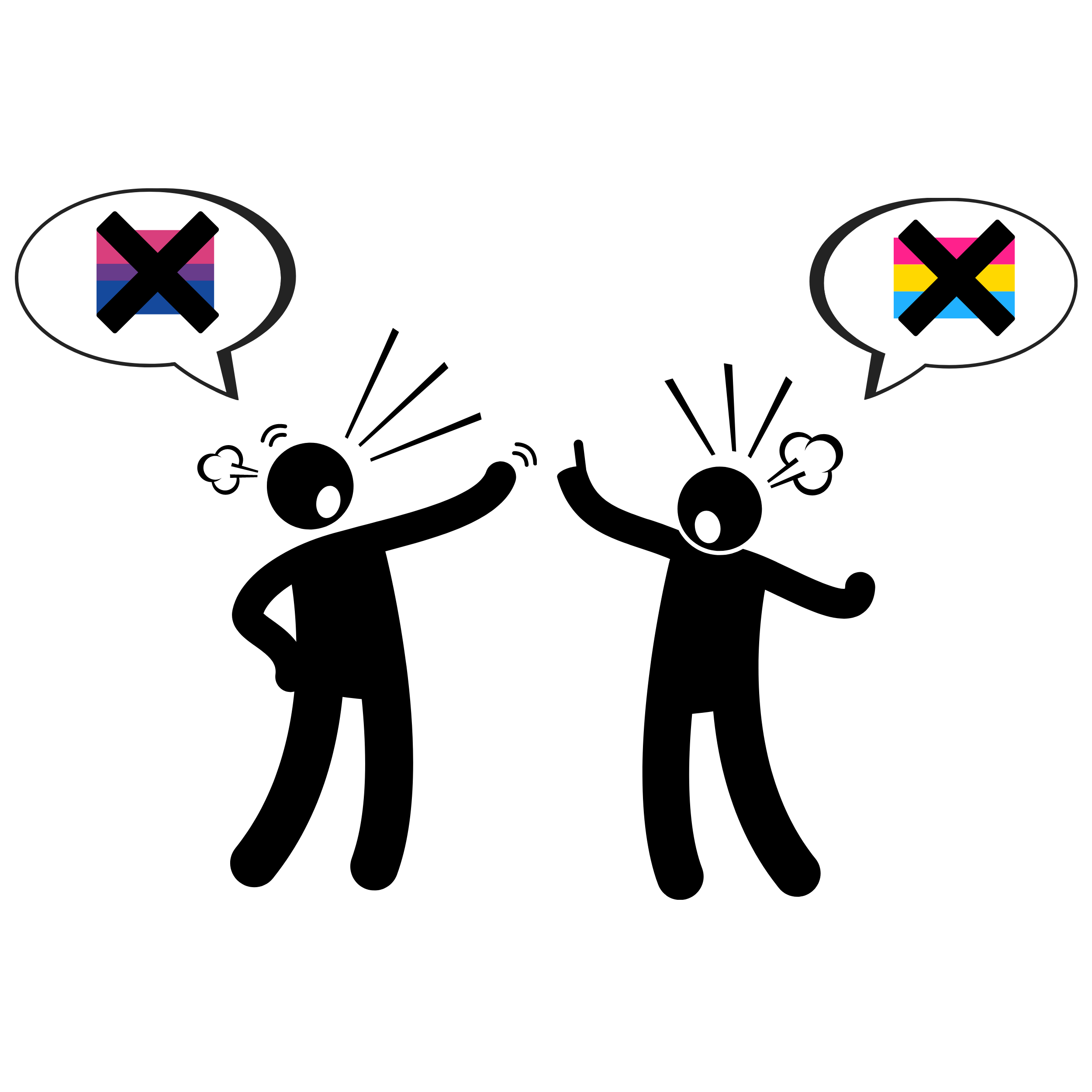
Differences in how these terms are used often create confusion and have led to bitter disagreements among some about what is considered “permissible” use of the terms. There are some in each group who actively campaign against the “other” term. Some Pansexual people argue that Bisexual is a transphobic orientation that erases non-binary people, and that Pansexual is a more inclusive label for attraction to multiple genders. While some Bisexual people argue that Pansexual people are yet another group trying to erase Bisexuality as a valid identity and accuse Pansexual people of wanting to impose their identity on others.
However. Bisexual people are not inherently transphobic, and indeed many Bisexual people are themselves trans and/or non-binary. And Pansexual people are not inherently trying to erase Bisexual people by using a different label to describe themselves and their experiences.
It’s okay for language to shift and evolve over time, and people should always be free to describe themselves using the term that feels most genuine and comfortable for them.
Anti-Bi/Pan Discrimination
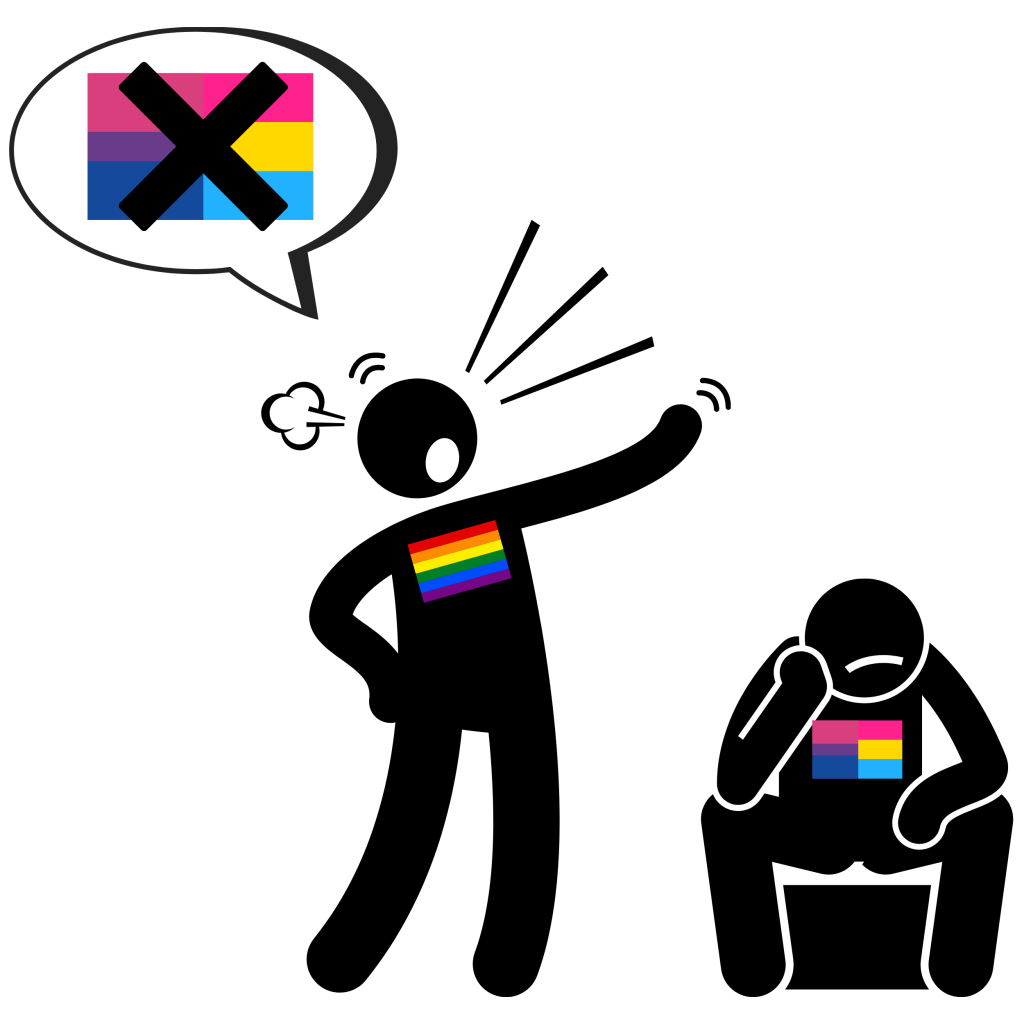
Bi(sexual) and Pan(sexual) people are often accused of having privilege for being able to have “straight” relationships, but bi/panphobia is extremely common – especially from other monosexual queer people. This means that many Bi/Pan people prefer to “pass” as monosexual, and are not able to be their true selves even in 2SLGBTQ+ spaces
Bi/Pan people are told that they are gay when they have same-gender partners and straight when they have different-gender partners. Because Bi/Pan people in “straight-appearing” relationships aren’t seen as “really” queer, “straight-appearing” couples where one or both partners are Bi/Pan are often explicitly told that they are not welcome at Pride or in other 2SLGBTQ+ spaces and events.
However, a person’s orientation is defined by how they experience attraction, not by who they date or who they have sex with. Bi/Pan people in “straight-passing” relationships are still Bi/Pan.

